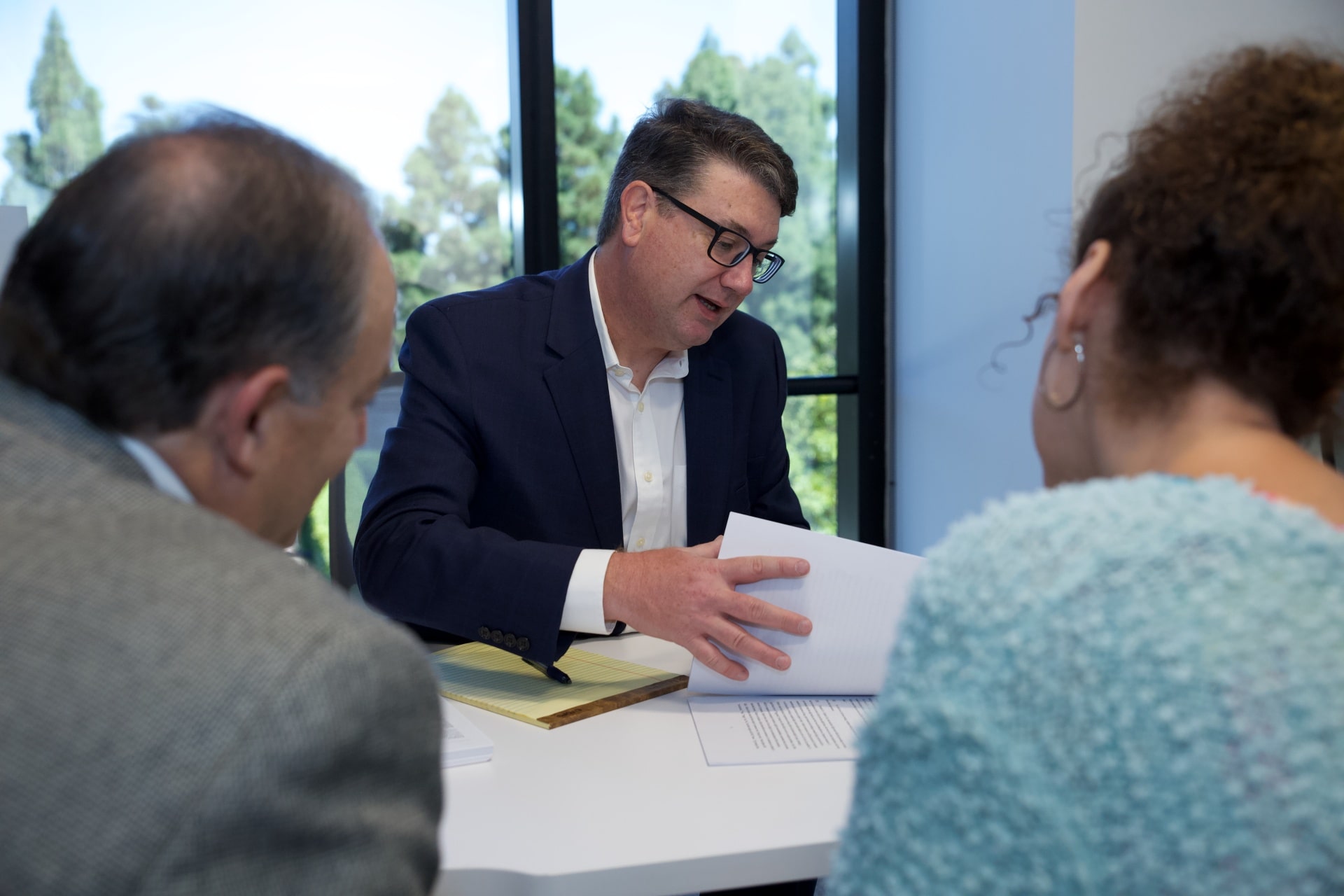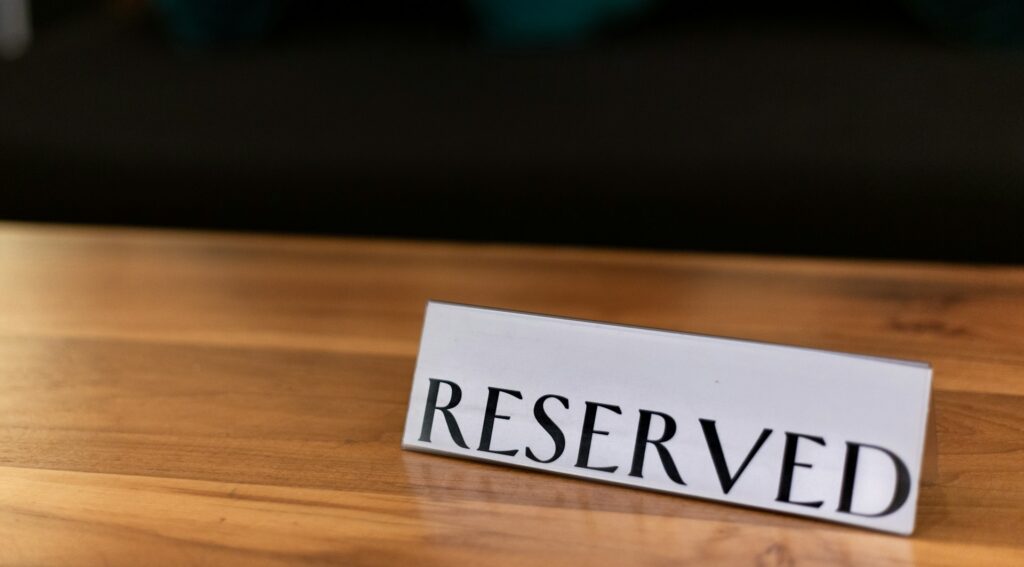So, you have a new invention and want to talk to a patent attorney about applying for a utility patent. Great!
Before your first phone call or in-person meeting, do your homework. Going into the consultation prepared is essential to protecting your legal rights and setting yourself up for an efficient—and less expensive—patent application process. Come to the meeting organized and armed with necessary information to set the tone and, if you become a client of the attorney, get your new attorney-client relationship off to a great start.
Checklist of Information to Bring to Your First Meeting
- You’ll need to provide contact information for yourself, any other inventors, and (if applicable) your business’ name, including full names, mailing address, phone numbers, and email address.
- Read up to make sure that it is a utility patent that you need.
Different types of intellectual property cover different kinds of creative works and technological developments. (Even experienced non-IP attorneys sometimes get confused about whether they need to apply for a patent, a trademark, a copyright, or a trade secret, so it is okay not to know. An experienced patent attorney can guide you on whether a patent application is the right approach for you. For more info, see our other blog posts covering the fundamentals of patents, trademarks, copyrights, and trade secrets. The more you know, the better use you will make of your time.) - Bring all the key documents for your invention or idea.
This means all your drawings, blueprints, or even prototypes, if you have them. If you have a journal, photographs, or videos that document your development of your invention, include it all, as these records will help your patent attorney understand your invention and may establish critical dates and serve as valuable evidence of your invention. - Write a description of your invention.
Be sure to focus on your invention’s unique features—in other words, what sets it apart from other products or solutions out there. You and your attorney must be able to explain why your invention is better than what already exists. Compared to what already exists, is your great idea:
… faster?
… cheaper?
… a solution with fewer parts?
… safer to use?
… better for the environment?
… more precise?
… more accurate?
… more comfortable?
… smaller?
… bigger?
… stronger?
more energy efficient?
a new solution to a new problem that you were the first to identify?
There are many possible reasons that your invention is better than what’s already out there. Being able to tell your patent attorney those reasons will help them prepare your patent application in a way that they can argue these advantages to the Patent Office, if necessary.
5. Bring a list of competitive products or companies.
If your invention steps into someone else’s market or customer base, make sure your patent lawyer is aware of this. They have to conduct a conflict check to make sure, before they get into the nitty-gritty of your invention, that they don’t already have a relationship with your competitor that might require them to decline to work for you. This will protect both you and the lawyer from any potential conflicts of interest.
6. Consider doing some online research to look for any earlier similar patents (what patent lawyers call “prior art”).
The Patent Office does not require you or your patent attorney to do any prior art searching before you file your patent application. And, deciding whether to do prior art searching is a tricky question. Some patent attorneys strongly recommend it, while others strongly recommend against it.
On the one hand, if you do prior art searching, you might find out that someone else already patented or published the invention that you thought you just made. And—as disappointing as it may be to find out that your invention isn’t patentable—imagine how much more disappointed you will be if you find out you can’t get a patent after spending thousands of dollars in legal fees and waiting years for the Patent Office to confirm that fact.
That being said, doing prior art searching does not guarantee that you will find all of the prior art that the patent examiner eventually finds. A prior art search can help, but your patent application might still be rejected based on prior art that the patent examiner finds, but that your prior art search did not find.
On the other hand, if you do prior art searching, you may find something similar, but not quite the same, as your invention. An experienced patent attorney often may help you navigate around that prior art and explain to the Patent Office and its examiner why your claimed invention is different and better and still help you to win a patent in the end.
But here is the catch. If you know about other similar solutions (“material prior art”) at the time you file your patent application, or anytime while it is pending, U.S. patent law requires you to disclose to the Patent Office that known material prior art. Failing to do so could enable a future patent infringer to accuse you of “inequitable conduct,” and either could block your patent application or severely hurt your legal rights after you have built an entire business around it. To play it safe, the best approach is to disclose all of the prior art you know about that might be even remotely relevant.
If you decide to do your own prior art searching, two great resources to learn about prior art searching are:
- the US. Patent Office’s Public Search feature, and
- Google Patents.
If you do find similar patents or prior art, keep copies to give to your patent attorney.
7. Be able to explain why you want a patent.
There are many different reasons to seek a patent, and the reasons are usually somewhat personal to the inventor. For example, do you want to:
-build a new business around your invention?
-license your invention to established companies?
-grow your resume for future employers?
-protect your invention from copying by existing competitors?
-publicly present or publish your idea in academia, while preventing your audience members from using and profiting from it without permission?
-add to your company’s patent portfolio to help your business attract additional investors?
Whatever your reasons, summarizing your motivation for seeking a patent will help your patent lawyer budget a strategy for you, personally.
8. Think about your timeline.
On average, after a patent application is filed, it takes about 3 years to get a decision. Sometimes, it takes much longer, depending on: (i) the tech involved, (ii) real time changes to patent law as developed by the federal courts, and (iii) the patent examiner’s views about your claimed invention and how hard you and your patent attorney need to work to convince them to approve your application. Although it is possible to pay extra fees to the Patent Office to put your patent application on the “Fast Track,” even this accelerated patent examination process normally takes at least one year.
On the other hand, if you have more time than money, or are still figuring out how to further develop and commercialize your invention, there are ways to reduce up-front costs.
Be clear with your patent attorney about your time v. money preferences, so that they can plan a patent application strategy that meets your needs.
9. Take a hard look at everything that has happened since you completed your invention.
Certain actions can change your legal rights and need to be brought up to your patent lawyer as soon as possible. For example, have you:
-already told someone about your invention without requiring them to keep the information confidential (by, say, signing a nondisclosure agreement)?
-offered to sell a product using your invention?
-already sold a product using your invention?
-publicly disclosed or displayed your invention, like at a trade show?
-published a white paper or academic article disclosing your invention?
If you have done any of these things, it is very, very important that you pinpoint the exact dates on which you did them, and give those dates to your patent lawyer so that they can analyze whether your actions have hurt your chances of getting a patent, and then decide how to best handle the situation.
10. Be realistic about your budget for legal fees.
However you slice it, patent applications are expensive. Although there is no such thing as a “typical” patent application, the legal fees for preparing and prosecuting a patent application over the 2–3-year process normally reaches into the thousands—if not tens of thousands—of dollars. Make sure you are prepared for this expense before hiring the patent attorney and that your budget matches your reasons for applying for a patent. (And, take another look at sections 7-8 above).
11. Jot down any questions you have about the patent process or potential challenges that might come up along the way.
In your conversation with a patent lawyer, you may be exploring a huge range of topics. Having a reference list of questions before you go in will make sure you get the answers you need to make a thoughtful, well-informed decision after your meeting ends.
Conclusion
By being well-prepared and bringing all the necessary materials, you can make the most of your initial consultation with a patent attorney and set a strong foundation for protecting your invention.
Lapple Ubell IP Law is an intellectual property law firm based in Irvine, California, dedicated to helping clients protect, manage, and enforce their innovations and creative assets. The firm provides strategic counsel on patents, trademarks, copyrights, and related IP matters for businesses of all sizes.
The author, Matt Lapple, is an experienced intellectual property attorney and a past-president of the Orange County Intellectual Property Law Association. If you have questions please contact Matt at matt@lappleubell.com or 949-756-4889.




